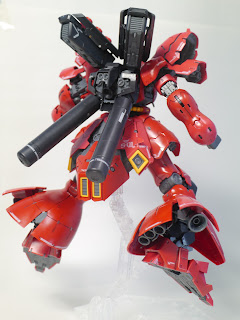This has been probably one of the trickiest installations I've ever experienced, thanks to the lack of necessary library, limited references and bug in the source code.
In order to install (or rather, compile) prep_chem_sources tool (I'll call it PCS from now on), HDF5, NetCDF and ZLIB libraries are necessary. Since NetCDF and ZLIB have been already available from previous WRF installation, one should only care about HDF5. Be advised though, HDF5 library of Oakforest super computer module was not compatible with the installation script. Thus, newly fresh HDF5 library is necessary (latest version might be compatible, thus keep checking updates of the super computer).
1. HDF5 Library Installation
Download the latest version from HDF group website. For this case, the version used is HDF5-1.10.4. Extract the file in a directory and execute installation script. Since PCS needs ZLIB and Fortran library, do not forget to mention them during the configuration.
$ ./configure --prefix=/work/gi55/c24223/libs/hdf5 --enable-fortran --enable-cxx --with-zlib=/work/gi55/c24223/libs/grib2
$ ./make
$ ./make check
$ ./make install
Make sure no errors occurred during the installation. After installing HDF5, put its path and LD_LIBRARY_PATH in the .bash_profile and re-load the file.
export HDF5=$PACSLIB/hdf5
export PATH=$HDF5/bin:$PATH
export LD_LIBRARY_PATH= ... :/work/gi55/c24223/libs/hdf5/lib
2. Download PCS tool
Download the tool from this ftp site directory: ftp://aftp.fsl.noaa.gov/divisions/taq/global_emissions
By the time this note was written, the latest version of PCS tool is ver. 1.5. Extract the tools inside any desired directory. Once extracted, there will a directory PREP-CHEM-SRC-1.5 with several sub-directories such as: /bin, /src, /extra etc.
3. Edit convert_edgar_to_RELACS_REAC.f90 Script
This step should be done, otherwise PCS installation will fail with following messages:
,CO &
-----------------------------^
convert_edgar_to_RELACS_REAC.f90(20): error #6405: The same named entity from different modules and/or program units cannot be referenced. [CH4]
,CH4 &
-----------------------------^
convert_edgar_to_RELACS_REAC.f90(21): error #6405: The same named entity from different modules and/or program units cannot be referenced. [SO2]
,SO2 &
-----------------------------^
compilation aborted for convert_edgar_to_RELACS_REAC.f90 (code 1)
make: *** [convert_edgar_to_RELACS_REAC.o] Error 1
The cause of this error is ironically simple: the absence of remark symbol ('!') in front of the 9th line of script convert_edgar_to_RELACS_REAC.f90 in the /src sub-directory:
8 subroutine convert_edgar_to_relacs_reac(isp,iespc,ident,spc_name_dummy) !kml
9 use chem1_list
10 !use chem1_list, only : alke, bio,ora2,aro,ket,alka,ald
9 use chem1_list
10 !use chem1_list, only : alke, bio,ora2,aro,ket,alka,ald
Thus, edit the script by adding '!' symbol in front of the said line using vi or other text editor.
4. Edit include.mk.intel.wrf Option Script and Compile PCS
This step is briefly explained on emission guide of WRF-Chem, however no further explanation about the script options available since it will strictly depend on the machine/system architecture. Anyway, one useful hint is: use the same options with WRF-Chem installation used, which are stored inside file configure.wrf inside /WRFV3 sub-directory.
Go to /bin/build sub-directory of PCS, and edit include.mk.intel.wrf option script (since the compiler used is intel compiler). Change these settings as follows:
update 2019/01/31:
Changed F_OPTS because the "longer" version caused crash during execution of utility for GOCART background data.
update 2019/01/31:
Changed F_OPTS because the "longer" version caused crash during execution of utility for GOCART background data.
NETCDF=/work/gi55/c24223/libs/netcdf
HDF5=/work/gi55/c24223/libs/hdf5
HDF5_LIB=-L$(HDF5)/lib -lhdf5hl_fortran -lhdf5_fortran -lhdf5_hl -lhdf5 -L/work/gi55/c24223/libs/grib2/lib -lz -ldl
F_COMP=mpif90 -f90=ifort
C_COMP=mpicc -cc=icc -DMPI2_SUPPORT
LOADER=$(F_COMP)
C_LOADER=$(C_COMP) -DFSEEKO64_OK
F_OPTS=-fpp -D$(CHEM) -O3 -convert big_endian
C_OPTS= -O2
LOADER_OPTS= -O2
C_OPTS= -O2
LOADER_OPTS= -O2
Save the script and compile PCS (for GOCART chem option):
$ make OPT=intel.wrf CHEM=RADM_WRF_FIM
If everything's going well, an executable prep_chem_sources_RADM_WRF_FIM_.exe will be created in /bin sub-directory. Check with ldd command to make sure there are no missing shared library links of the executable.
$ ldd prep_chem_sources_RADM_WRF_FIM_.exe
linux-vdso.so.1 => (0x00007ffc35bbe000)
libnetcdff.so.6 => /work/gi55/c24223/libs/netcdf/lib/libnetcdff.so.6 (0x00007ff8b2825000)
libnetcdf.so.11 => /work/gi55/c24223/libs/netcdf/lib/libnetcdf.so.11 (0x00007ff8b23cf000)
libhdf5hl_fortran.so.100 => /work/gi55/c24223/libs/hdf5/lib/libhdf5hl_fortran.so.100 (0x00007ff8b21a8000)
libhdf5_fortran.so.100 => /work/gi55/c24223/libs/hdf5/lib/libhdf5_fortran.so.100 (0x00007ff8b1f45000)
libhdf5_hl.so.100 => /work/gi55/c24223/libs/hdf5/lib/libhdf5_hl.so.100 (0x00007ff8b1d1c000)
libhdf5.so.103 => /work/gi55/c24223/libs/hdf5/lib/libhdf5.so.103 (0x00007ff8b1679000)
libz.so.1 => /work/gi55/c24223/libs/grib2/lib/libz.so.1 (0x00007ff8b145a000)
libdl.so.2 => /lib64/libdl.so.2 (0x00007ff8b1237000)
libmpifort.so.12 => /home/opt/local/cores/intel/impi/2018.1.163/intel64/lib/libmpifort.so.12 (0x00007ff8b0e8d000)
libmpi.so.12 => /home/opt/local/cores/intel/impi/2018.1.163/intel64/lib/libmpi.so.12 (0x00007ff8b0208000)
librt.so.1 => /lib64/librt.so.1 (0x00007ff8b0000000)
libpthread.so.0 => /lib64/libpthread.so.0 (0x00007ff8afde3000)
libm.so.6 => /lib64/libm.so.6 (0x00007ff8afae1000)
libc.so.6 => /lib64/libc.so.6 (0x00007ff8af71e000)
libgcc_s.so.1 => /lib64/libgcc_s.so.1 (0x00007ff8af507000)
libhdf5_hl.so.10 => /work/opt/local/apps/intel/2017.1.132/hdf5/1.8.17/lib/libhdf5_hl.so.10 (0x00007ff8af2db000)
libhdf5.so.10 => /work/opt/local/apps/intel/2017.1.132/hdf5/1.8.17/lib/libhdf5.so.10 (0x00007ff8aebb3000)
libifport.so.5 => /home/opt/local/cores/intel/compilers_and_libraries_2018.1.163/linux/compiler/lib/intel64/libifport.so.5 (0x00007ff8ae984000)
libifcoremt.so.5 => /home/opt/local/cores/intel/compilers_and_libraries_2018.1.163/linux/compiler/lib/intel64/libifcoremt.so.5 (0x00007ff8ae5f0000)
libimf.so => /home/opt/local/cores/intel/compilers_and_libraries_2018.1.163/linux/compiler/lib/intel64/libimf.so (0x00007ff8ae061000)
libsvml.so => /home/opt/local/cores/intel/compilers_and_libraries_2018.1.163/linux/compiler/lib/intel64/libsvml.so (0x00007ff8ac9ae000)
libintlc.so.5 => /home/opt/local/cores/intel/compilers_and_libraries_2018.1.163/linux/compiler/lib/intel64/libintlc.so.5 (0x00007ff8ac740000)
libirng.so => /home/opt/local/cores/intel/compilers_and_libraries_2018.1.163/linux/compiler/lib/intel64/libirng.so (0x00007ff8ac3cc000)
/lib64/ld-linux-x86-64.so.2 (0x00005572db0f7000)





































































